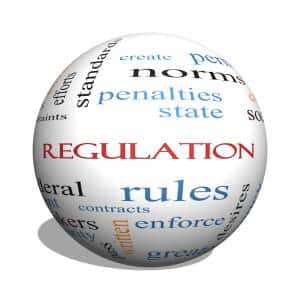 The Wall Street Journal recently had a discussion with medical-device safety experts to better understand whether the current FDA framework governing approval of medical devices is effective when it comes to safety. This blog summarizes the Q&A article for the WSJ. You can also check out this article for more information.
The Wall Street Journal recently had a discussion with medical-device safety experts to better understand whether the current FDA framework governing approval of medical devices is effective when it comes to safety. This blog summarizes the Q&A article for the WSJ. You can also check out this article for more information.
The System
Innovation is great. It’s what America is built on, and therefore, the FDA process doesn’t want to stymie innovation when it comes to creating new medical devices. However, the WSJ questions whether the FDA’s approach prevents this innovation, or instead does the FDA need to do more to protect patients/consumers. According to a former FDA deputy commissioner, the FDA has deviated from “the original spirit” of the idea that not all devices pose the same degree of risk. Thus, he states that the FDA is “trying to apply a much more uniform and druglike approach to its regulation of medical devices, increasing the hurdles that new products must clear. At the same time, the FDA is treating more low-risk devices like they were high risk.”
However, others say that while the FDA may be overregulating some devices, that for the most part is an exception to the norm. Another expert, a device attorney, states that there shouldn’t be “sweeping, fundamental reform” regarding FDA oversight, but “continuous improvement guided by continuous review of agency performance data as well as marketplace and scientific trends.”
The other expert, a professor, reminds us that only a few percent of devices on the U.S. market go through the process requiring any clinical data. She also states that “even that most-stringent pathway doesn’t require two randomized clinical trials.” She reminds that only those devices which pose a “significant risk of serious morbidity or death” are removed, as shown with pelvic mesh and morcellators.
Where’s the Evidence?
The WSJ also poses the question that devices often get on the market with minimal evidence of safety. The commentators note that unsafe devices have made it to the market, notably morcellators; however, the attorney expert believes that even with such unsafe devices we shouldn’t just “fundamentally change the system.” He notes that not many items cleared by the FDA end up unsafe or ineffective.
Preventing Failures?
The WSJ then mentions how one of the FDA’s “worst failures,” a Medtronic defibrillator wire, where the company relied on stress testing and not a clinical trial, resulted in 268,000 patients being exposed to a wire that led to multiple deaths. One commentator points out that “99.8% of all medical devices have no serious adverse events associated with them” unlike the defibrillator wire. He also mentions that the FDA is implementing a unique device identifier (UDI) system to better track device performance once a device has been approved. However, another commentator points out that only a few devices enter the market after at least some clinical data, a vast majority do not; thus, there is “NO requirement to demonstrate safety and effectiveness.” He recommends that we “have national, publicly available registries of devices and procedures” in order to “track in real-time the outcomes.” That way we would better know the benefits and the risks of the device.
FDA Guidance
What about FDA guidance when it comes to drugs and medical devices? The FDA must provide updates for regulatory issues. As they become aware of new changes in drugs and devices the agency often issues a “draft guidance” on regulatory issues. This draft allows for a time period in which the FDA receives comments from the drug and medical industry, and also the public, so that they can develop a final guidance for policies and procedures. Guidances are not legally binding, but they clearly influence drug and device makers. Yet an article from the WSJ notes that there are concerns that the FDA takes too long to issue a final guidance, and that the draft guidance becomes a “default policy,” which is not its purpose. Therefore, draft guidances may be problematic.
Maybe it’s time for the FDA to consider its function and goals. However, even with changes, or a complete overhaul, certain drugs or devices will most likely still get approved and cause serious injury to others. Maybe a deeper look at the drug and device industry is needed.



